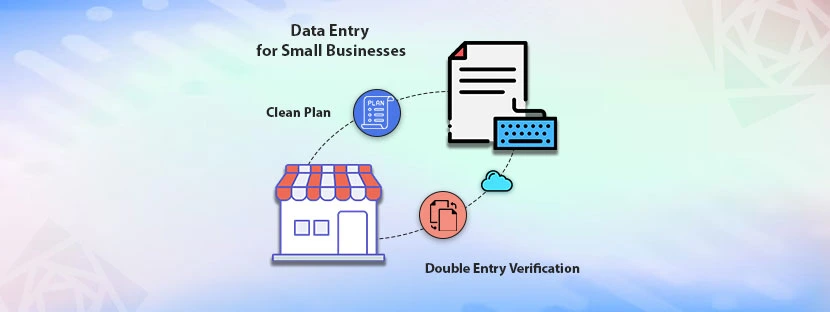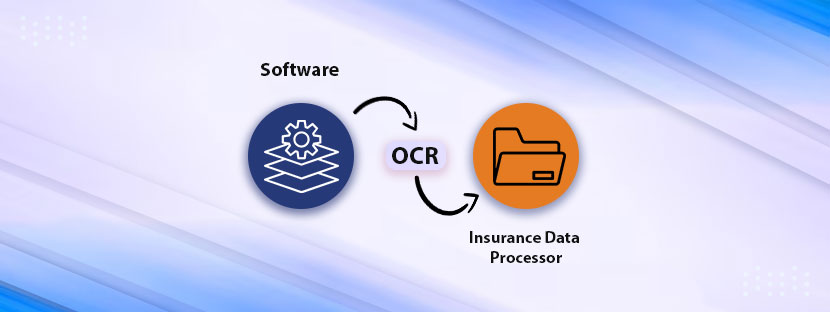In This Article
Post the COVID-19 pandemic, small businesses are booming at a faster rate than big businesses. Can you guess what percentage of these businesses have grown over this period? As per the Q3 estimates of the Small Business Index, 72% of small business owners say they are comfortable with the current cash flow.
These businesses majorly rely on data entry tasks to keep the business functions on point.
Assessing the data becomes essential for every business to stay relevant in the industry. Data assessment is rather the final stage to gain insights from raw data. But before that, the organization records regular data in proper format. The task of entering data into the system includes scanning, transcription, updating, etc.
Having proper knowledge about the data entry system is a must for small businesses. A systematic approach is there by which you can record data in the computer system. However, small businesses can delegate the task to any outsourcing agency for better support.
This blog aims to explain the importance of data entry for small businesses. Also, it will detail the best practices followed in the data processing system here.
Let’s start by explaining the role of data for small businesses!
1. Role of Data and the Process of Record
Without proper data, businesses nowadays cannot make informed decisions regarding management and the market. Data helps businesses to understand the market and manage internal functions. Imagine without data how a business tells whether it has made a profit or loss. To check the effectiveness of your marketing strategy, you also need data.
Hence, data plays a wider role in developing and maintaining business operations. Businesses usually recruit specialists to keep a record of crucial data in proper formats. Besides recruiting in-house experts, outsourcing has become a popular source for this task. Hiring data entry experts via outsourcing suits small businesses the best. Because it involves no recruitment costs and the service is on-demand basis.
1.1 Understand Customers Better
Businesses can make better decisions regarding the marketing aspects if they have customers’ data. A lot of companies have their specific research and development departments, especially for data entry for business purposes. These companies collect massive chunks of data from the market to understand the current demand.
Besides market data, these companies also have customers’ data, which helps them to come up with new ideas. Assessing customers’ data properly helps companies to understand customers better. They can frame different marketing strategies to attract more customers with the data assessment results.
1.2 Manage Business Better
Besides understanding customers, the data entry process also helps in managing crucial business operations. Businesses keep a record of regular transactions in the record books, and later on, they prepare financial statements from that. With proper recording of data, businesses can make informed decisions regarding operation management.
Imagine, you have a data entry system showing a particular area of your business kept recording losses. Therefore, what would you do now? Obviously! You would shift the business process from that area. But how would you know that if you haven’t recorded the data every day? So, Data Entry and Large Businesses help to manage their operation efficiently because it provides insights.
2. Best Data Entry Practices for Small Businesses
After clarifying the role of Data Entry and Small Businesses, you need to understand the best practices followed here. Managing the data accurately in the database is essentially important. For this reason, businesses hire experts besides deploying software for entering the data. Here you notice the best practices of data entry for growth.
2.1 Have a Clean Plan
The process of recording the data into the database must follow a proper plan. The plan involves the process of collecting data, gathering data sources, applying the best method, etc. Besides the extraction part, the plan must also include the verification and validation aspect of the data recording. These aspects will maintain the quality of the data and also ensure the accuracy level.
The process of receding data into the database is not random, rather it follows specific guidelines for that. Therefore, having a clean plan ensures that the data entry process follows a systematic approach. Following a proper plan also enhances data integrity and provides the best support while making organized decisions.
A clean data recording plan must include the following components;
First, clarify what your data entry system should look like. You must have a clear aim for keeping the data process like that. Businesses aim to record data from multiple aspects like receding business transactions, sales volume measurements, building up brand persona, etc.
Simplifying the data sources solves half of the work in the processing system. You need to choose the source of your data specifically to make data entry for business processes faster. Usually, businesses collect data from forms and external documents but sometimes they rely on databases also.
Giving milestones for each task is essentially crucial when it comes to completing the task within time. Therefore, your Data Entry and Large Businesses must have a proper and well-defined timeline. You can track the process using the timeline to estimate time requirement facts.
Maintaining a proper quality standard is a must in data entry tasks to enhance capabilities. Ensuring the best standards will maintain the quality and accuracy of the data as well as the data format.
2.2 Preprocessing and Cleaning
Companies keep a record of data for later use, especially for analysis and storage. You cannot store an enormous volume of processed data, you need to format that before. Along with this, you need to identify errors in the process and involve the best strategy to eliminate them. Your datasets should not contain any inaccurate or unprocessed data at all.
Therefore, you need to take a detailed measure while eliminating the errors from all your datasets. The process of cleaning the datasets involves removing duplicates, dealing with missing values, etc. Let’s check what other things are there in the data cleaning process.
Identifying the duplicate is very important to have clean and efficient datasets. Duplicate files can generate a false result therefore you need to remove them properly. Removing duplicates also enhances the consistency of the data in the database.
The prime task of the data entry process is to make uniform formats for all datasets. A standardized format will keep the data accurately stored in the database. This will simplify the data assessment process as all files will have the same format.
To headline missing values, first, you need to remove random variance from the datasets. Thereafter, you can apply any method like imputation or delegation to find the missing values in the database.
Check out: Best Document Management Systems of All Time (our blog)
2.3 Choose a Method
The process of data entry and small businesses has two types; manual entry and automated entry. Based on the data needs, organizations choose their best method of entering the data entry for business into the system. Nowadays, businesses choose to record the data via automated but manually verified systems.
The automated process is recording the data in the database involves the use of software. With the help of software, companies automate their Data Entry and Large Businesses processes. However, for the best results, manual inspection is a must. To choose the best method of data entry, companies need to consider the following aspects.
An automated system suffices when the data volume is huge. On the other hand, a manual process is more than sufficient when the data volume is low. The manual process can handle complex data with ease while automation can do that with further upgrades.
To get a highly accurate result, you need a manual inspection in the process. However, automated systems are highly efficient in providing accurate results in bulk.
The level of cruciality of your data would determine whether you need a manual process or an automated process. You can also choose a combination of manual and automated processes when you handle vital datasets.
2.4 Verification and Validation
Verification and validation are the essential components that ensure the accuracy of the datasets. Having a proper data validation method eliminates the causes of data inaccuracy. Besides that, it also minimizes errors by rectifying them instantly. Data validation also ensures data entry for growth and that the data you have entered follows specific guidelines.
However, on the other hand, data verification reviews the data that you entered into the system comprehensively. The process of data entry verification involves cross-referencing the data with historical records. It enhances the reliability of the data records and supports making informed decisions. Besides cross-referencing, you can follow other measures like;
To identify and eliminate discrepancies, you can adopt a double-entry verification process. In this data entry practices method, the input data has to go through two input tests before entering the final database.
Keeping one validation rule is not enough for a continuous process. Therefore, you need to update the validation rules periodically to manage the datasets better. You need to keep pace with the changing requirements of the validation rules while inputting the data.
Feedback is essential when it comes to rectifying a sudden mistake. Feedback is amazing in addressing challenges regarding data validation as well as verification.
2.5 Preparing Backups
Scheduling the data backup is a must for in data recording process. Usually, businesses keep copies of the main files and store them in a secure location for better protection. Creating data backup has only one sole motive, which is to retrieve databases whenever needed. Backups will provide support in the time of hardware failure or any unforeseen event.
Having a strong backup system in the data entry process ensures no data loss and reduces downtime. Nowadays, besides offline data storage, cloud technology helps businesses to store data backups. The frequency of data backup completely depends upon the objective of the database management plan. To ensure a better backup plan, you can imply the following things.
Just like automating the data recording process, you can also automate the data backup process. Many organizations use software for scheduling the database upgrade. With an automatic system, a consistent flow of data you can observe into your system.
Storing data near your site can involve risks and thus you need to avoid that. You can choose to store your data offsite locations or in the cloud. Both options are safe and secure in terms of storing data backups.
Running regular data restoration tests is essential to check the functionality of the data retrieval process. If errors occur during the test, you can easily rectify the process for better backups.
Besides these factors, setting KPIs (Key Performance Indicators) will help to provide better security of the data. Also, implementing a continuous learning mechanism in your organization will help to eliminate data mistakes.
3. Keeping an Inhouse Team Vs Outsourcing
To handle data entry tasks, businesses across the globe prefer outsourcing nowadays. For Data Entry and Small Businesses, it becomes challenging to keep a team of data-handling experts. However, outsourcing offers the same service that an in-house team can provide but at a lower price. Businesses do not have to keep maintaining a team when they prefer outsourcing.
Keeping in-house data processing experts may be one of the best options but not suitable for small businesses. You need to pay regular salaries along with other benefits to the team members. Whereas, outsourcing provides better management of these tasks without demanding regular payments. You can hire experts through outsourcing whenever you need data entry for growth.
Lastly, as small businesses are growing rapidly business owners must not be involved in such tasks, which can be outsourced. This is the right time for them to focus on the core functions of the business rather than focusing on data entry tasks. They can simply outsource data entry services and stay focused on their core functions.











